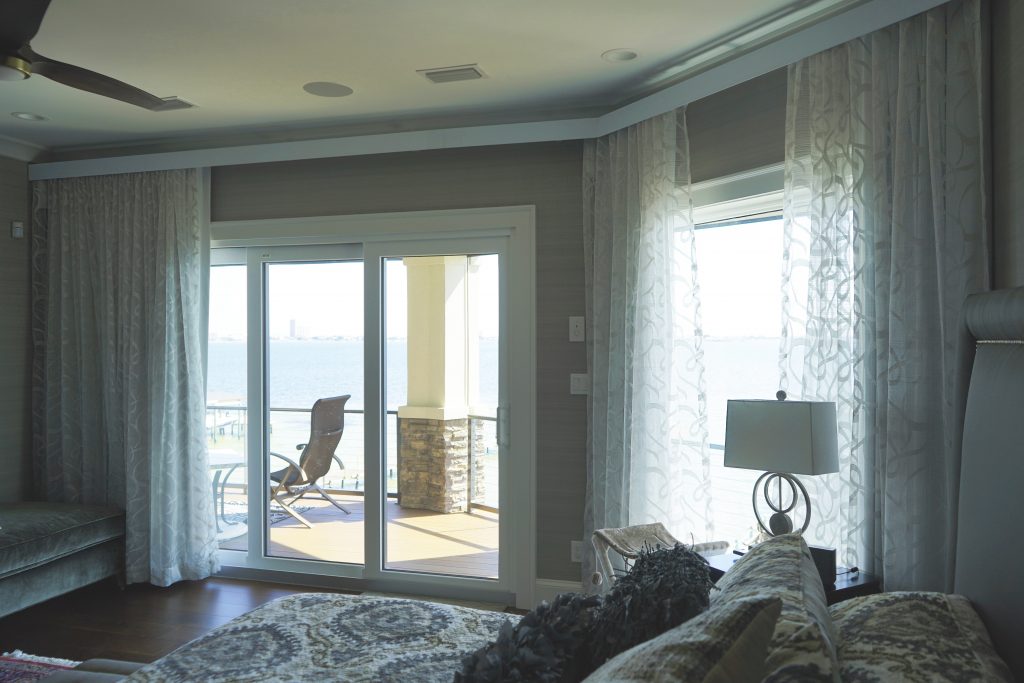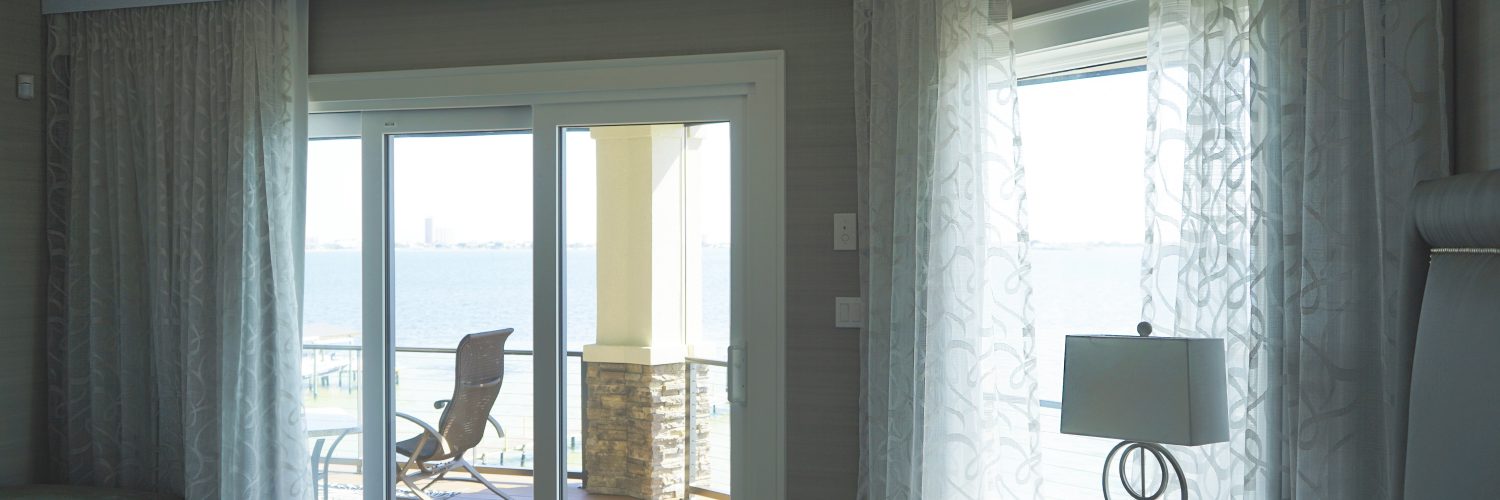By Susan Schultz

Photo courtesy of Current Products Corp
We are in the midst of a seismic paradigm shift when it comes to technology in our homes. The emergence of 5G wireless networks has many companies already touting the sleek, utopian ideal of connected devices and seamless services that will supposedly define the homes of the near future. Residential tech adoption is so important to big-name brands that they’ve become major players at Milan Design Week, the world’s largest design event. For the past several years, tech companies such as 3M, Apple, Google, Sony, LG, Sonos and Bang & Olufsen have been using Milan to showcase their efforts to integrate tech into the home.
In the window treatments industry, motorization companies have served as “gateway” home tech for most designers, retailers and installers. For consumers, it’s been devices like Google Home (now Google Nest) and Amazon Alexa or Echo. But with technology changing so rapidly, everyone, from the international manufacturers to the local window treatments store, is facing huge challenges.
“How do you implement the latest technology and still have it compatible with older products?” asks Scott Hand, director of new product development at Current Products Corp, when he was queried about issues the industry will need to confront in the next decade. “Improvements will be exponential, so how does a consumer know what to invest in for their home? For example, imagine the first 10 to 20 years of radio and what the devices looked like then compared to today.” His initial thought would be to take a cue from the mobile phone industry, which has programs in place to buy back, credit or lease equipment.
Moving Consumers Along the Trend Curve
But we’re getting a bit ahead of ourselves. No matter how quickly technology is changing the consumer market, for most window treatment projects, automation and integration into a home “internet of things” (IoT) setup is still rare. “Although smart products provide many benefits, they are still considered an unnecessary investment to many,” says Kyle Choi, applications coordinator at Draperies.com. “But as tech becomes more effective, more accessible and more affordable, eventually the cost and benefits of upgrading to a smart device will outweigh using a dated solution.”
Morgan Glennon with Somfy Systems believes this tipping point for the industry will happen relatively soon, based on current demographics. “The digital native generation expects homes that will work with the same kind of immediacy as the rest of the technology in their lives,” she says. “This could mean triggering a ‘movie night’ scene with a voice command that closes the shades, turns off the lights and turns on the television. They expect a home that makes their lives easier and also saves them time, money and energy.” She added that the exact same features are selling points to the aging baby boomer demographic, as a fully realized smart-home ecosystem that includes window treatments makes homes more friendly to those aging in place.
Willis Mullet, founder of QMotion and now owner and founder of Current Products Corp, expects even more from a well-designed home-tech ecosystem. “We are just seeing the beginning of what these devices are capable of doing. For example, I have noticed recently that my Echo device has an expanded knowledge base along with more conversation skills. With the help of AI, these devices will become more conversant to the point where they become companions.”
The Home as Partner
This idea, that our homes will soon be able to (virtually) care for us, is a frequently voiced goal. A recent survey by Accenture on the issues facing companies investing in the future of the home opens with, “Imagine returning home and … as you enter the keyless door an AI assistant welcomes you and begins gently organizing your evening … while your home environment is invisibly adjusted in response to its current occupants.”
Alexandra Egan, a marketing manager at Current Products Corp, shared the same thought. “Over the next decade, adaptive automation, where devices and hubs learn your common behaviors and react, will become increasingly sophisticated and commonplace in home-automation setups. For example, if I come home from work with a headache, my doorbell would be able to read my facial expression and tell that I’m in pain—it knows it’s a headache based on my Google search history for ‘best headache remedies,’ or perhaps it can tell based on the way my head is bent forward slightly. Seeing this, the doorbell would tell my lights to dim, my voice assistant to speak softly and my curtains to close.”
But this vision of a home of sleek, seamless services is pretty far removed from the smart home of today, where we have an increasing number of factionalized platforms, privacy concerns and unconnected devices. Solving these issues, in a way that truly understands how technology has changed the very definition of home, is critical to engineering the future-home solutions that consumers really want.
Open Source Opens Opportunities
Most industry observers agree that there’s going to be a shakeout in terms of tech platforms and interoperability. “Technology is driving home automation away from proprietary protocols and toward an open, connected home ecosystem,” says Glennon. “This delivers the confidence that products and services will all work together through standardization and will be increasingly important as the smart-home environment continues to develop.”
Fritz Werder, vice president and general manager of residential AV systems at Legrand, goes one step further. “If we had to pick one thing (that would be most important), our money would be on an AI smart hub that will be extremely secure and support all the smart devices and appliances in the home. However, it’s worth noting that as new technology continues to accelerate, there could very well be something that we haven’t even heard of yet that will be a necessity.”
Improving the Consumer Experience
Key to Werder’s statement is the phrase “extremely secure.” Given the high-profile cases of IoT devices listening, recording and transmitting data, as well as the ability of hackers to access IoT gadgets, consumers have reason to be concerned. “I’m waiting for a gangster or mob thriller using household voice automation listening devices as a bug,” says Hand. Consumers will require assurance that the interactive appliances and devices they bring into their home will be and remain secure.
Mullet agrees, saying, “The challenge will be to have the developer of these new skills remain agnostic to politics and not become a way of gathering information related to commercial interests. The privacy threat, whether real or imagined, will be the biggest obstacle to overcome in the introduction of these new capabilities.”
To Hand, the challenges of security and reliability are inseparable. “If the Wi-Fi service provider fails, what happens? If power is lost, what happens? If batteries decay and signal strength is lost, what happens? One bad experience for a customer can hurt your company’s reputation and the reputation for IoT devices in general.”
Finally, as anyone who sold or installed an automated window treatment 10 or more years ago can attest, while practical concerns like light control and out-of-home security were the reasons given for the sale, the clients back then were just as pleased to show off their tricked out window treatments to friends and family. That’s not a surprise. A 20-year study conducted at Cornell University concluded that happiness derived from experiences is more enduring than happiness gained from buying things. People want experiences they can remember and share with others.
A decade ago, motorized window treatments were the creators and enablers of such an experience. But with the experience economy already mature in many areas of consumer culture, from attending live events in your living room to streaming workout routines from the gym, the window treatment industry’s head start has disappeared. In order to ensure window treatments are an integral part of future homes, the industry will need to look at how tech can be applied toward a larger goal, one that is connected to widespread consumer behavior trends. For example, how can automated window treatments assist in living a healthier lifestyle? A more sustainable lifestyle? Can IoT window treatments be metamorphic and responsive beyond light control?
As an example, here’s a call back to the beginning of this article and the fact that so many consumer electronics brands are showing in Milan. They are all trying to solve the issue that televisions are ugly black wastes of space when they’re not in use, which is most of the time. Combine that with a generation of people who move frequently for work and personal reasons, use phone and tablets more than computers, and love clean, stylish home design shots via Instagram and you get persistent year-on-year declines in TV sales.
If TV’s can disappear from the home, replaced by smaller screens with easier access, flexibility and mobility, who’s to say window treatments won’t be replaced in 10 years by electrochromic or other smart-glass technologies in many buildings? Or integrated into home entertainment systems as literal “windows on the world” with speakers, lights and displays that work together to create ever-changing visuals where there used to be blinds?
The good news is that automated window treatments already combine two important long-term consumer trends: convenience and personalization. So, one of the most important industry goals should be guaranteeing that custom, automated window treatments remain relevant, in spite of changing demographics and technology. That’s something we can all get behind today as we wait to see what the home of the future holds for tomorrow.





